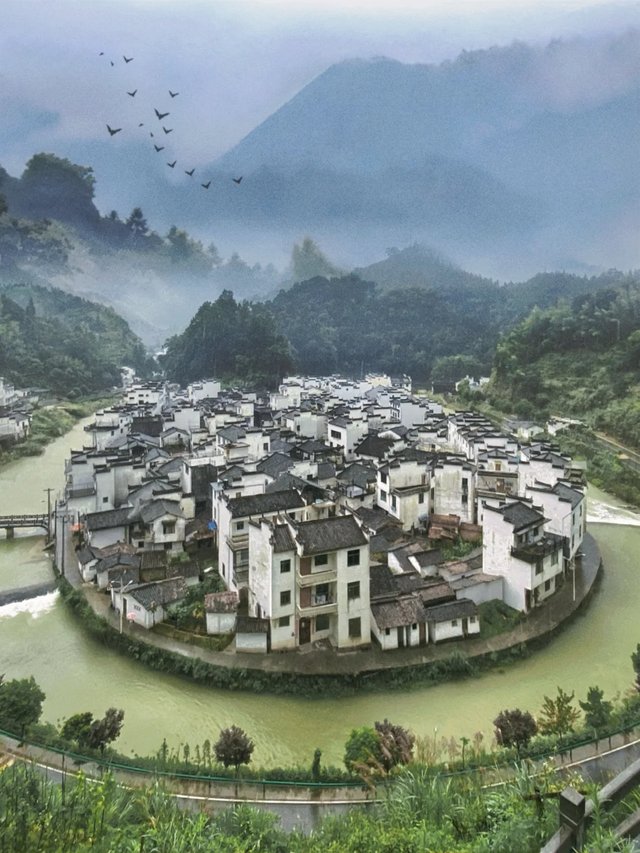难以置信,江西藏着中国蕞圆的千年古村
菊径村始建于宋初
由罗盘鼻祖,南唐国师何溥亲自设计
村前水流如环,村后龙山葱郁,独聚風水
明永乐年间,因陶渊明《归去来兮辞》“三径就荒,松菊犹存”更名:菊径
千百年来这里被称为:
“八掛村”和“中国蕞圆村庄”
·
菊径村是一个古风犹存的徽州古村落
村中文物众多,宋代何氏祠堂内有大明崇祯皇帝御笔亲赐皇匾“黄阁调元”牌匾,可惜现已被盗
登上村落正南的半山腰观景台
山环水绕的菊径村巷道深曲,古韵悠长
传统徽派建筑粉墙黛瓦与层叠青山相映成画
·
开车2小时,拍照5分钟
这里没有门票,也没有商业气息
如果们有时间,可以走过木板桥走进村子
感受这座千年古村的悠然自得,世外桃源

Chujiang Village was founded in the early Song Dynasty and was personally designed by the compass pioneer and Southern Tang National Teacher He Pu. In front of the village, water flows in a circular pattern, while behind it, the lush Longshan Mountain provides a unique Feng Shui gathering. During the Ming Yongle period, inspired by Tao Yuanming's poem "Returning Home" which mentioned "three paths becoming desolate, with pine and chrysanthemums still present," the village was renamed as Jujing.
For centuries, this place has been known as the "Village of Eight Gossips" and the "Quaint Circular Village of China."
Jujing Village is a well-preserved ancient village in the style of Huizhou architecture. It boasts numerous cultural relics, including a plaque bestowed by Emperor Chongzhen of the Ming Dynasty, inscribed with the words "Huangge Diaoyuan," unfortunately stolen over time.
Climbing to the observation platform on the southern slope of the village, you can enjoy panoramic views. The winding lanes of Jujing Village, surrounded by mountains and water, exude a timeless charm. Traditional Huizhou-style buildings, with their pink walls and dark tiles, harmonize with the layered green hills, creating picturesque scenes.
Located just a 2-hour drive away, spending only 5 minutes capturing photos, there are no entrance fees or commercial vibes here. If you have the time, stroll across the wooden bridge and enter the village to experience the tranquil and idyllic atmosphere of this thousand-year-old village, a veritable paradise away from the hustle and bustle of the world.